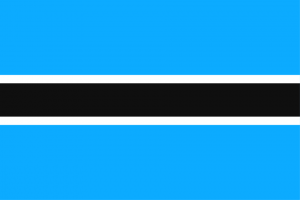Language/Tswana/Grammar/Conjunctions
Conjunctions are a crucial part of any language, as they allow us to connect words, phrases, and ideas together in a coherent manner. In Tswana, conjunctions serve the same purpose, and they are used with different parts of speech, including nouns, verbs, and adjectives. In this lesson, you will learn about the most common conjunctions in Tswana and how to use them effectively to connect different elements of a sentence. By the end of this lesson, you will have a better understanding of Tswana grammar and be able to communicate more fluently in the language.
What are Conjunctions?
Before we dive into the specifics of conjunctions in Tswana, let's first establish what conjunctions are in general. A conjunction is a word or group of words that connects two or more words, phrases, or clauses in a sentence. They are used to coordinate different elements of a sentence and express relationships between them. There are different types of conjunctions, such as coordinating conjunctions, subordinating conjunctions, and correlative conjunctions, each with its own function and usage. In Tswana, we will focus mainly on coordinating conjunctions, which are the most common type.
Coordinating Conjunctions
Coordinating conjunctions are used to join two or more elements of equal syntactic importance in a sentence, such as two nouns, two verbs, or two clauses. In Tswana, coordinating conjunctions are divided into two groups:
- baagisanyana (cumulative conjunctions)
- baagisanyo (disjunctive conjunctions)
Cumulative conjunctions are used to join elements that are similar or that add up to each other, while disjunctive conjunctions are used to join elements that are different or express a contrast.
Here is a list of the most common coordinating conjunctions in Tswana:
| Tswana | Pronunciation ( | Transliteration/Latin script) | English |
|---|---|---|---|
| le | le (lay) | and, together with, as well as | |
| mme/ebile | mme (mmay)/ebile (ebeelay) | but, yet, however | |
| kwaakwaa | kwaakwaa (kwaakwaa) | or |
Examples
Let's see how we can use coordinating conjunctions in Tswana:
- O tla bina le mosadi wa gago. (You will dance with your wife.)
- O tla bina le mosadi wa gago le bana ba rona. (You will dance with your wife and our children.)
- Ke tla bona mme ke tla tsenya. (I will see, but I will not touch.)
- Ke tla bona mme ke tla tsenya kwaakwaa. (I will see, but I will not touch, or maybe I will.)
In the first example, we use the conjunction "le" to join two nouns "mosadi" (wife) and "bana" (children) to express that we will dance with both of them. In the second example, we use the same conjunction "le" to connect both the wife and children to the verb "bina" (dance). In the third example, we use the conjunction "mme" to join two clauses "Ke tla bona" (I will see) and "ke tla tsenya" (I will not touch) to express a contrast between the two actions. In the last example, we use the conjunction "kwaakwaa" to express a choice between two options, seeing or touching.
Conclusion
Conjunctions are essential for creating meaningful and grammatically correct sentences in Tswana, as they establish the relationships between different elements of a sentence. Understanding how to use conjunctions effectively can help you communicate in Tswana more fluently and confidently. By learning the most common coordinating conjunctions in Tswana, you can start building more complex sentences and expressing your ideas more clearly. Keep practicing, and don't be afraid to make mistakes. Every mistake is an opportunity to learn and improve your language skills.

